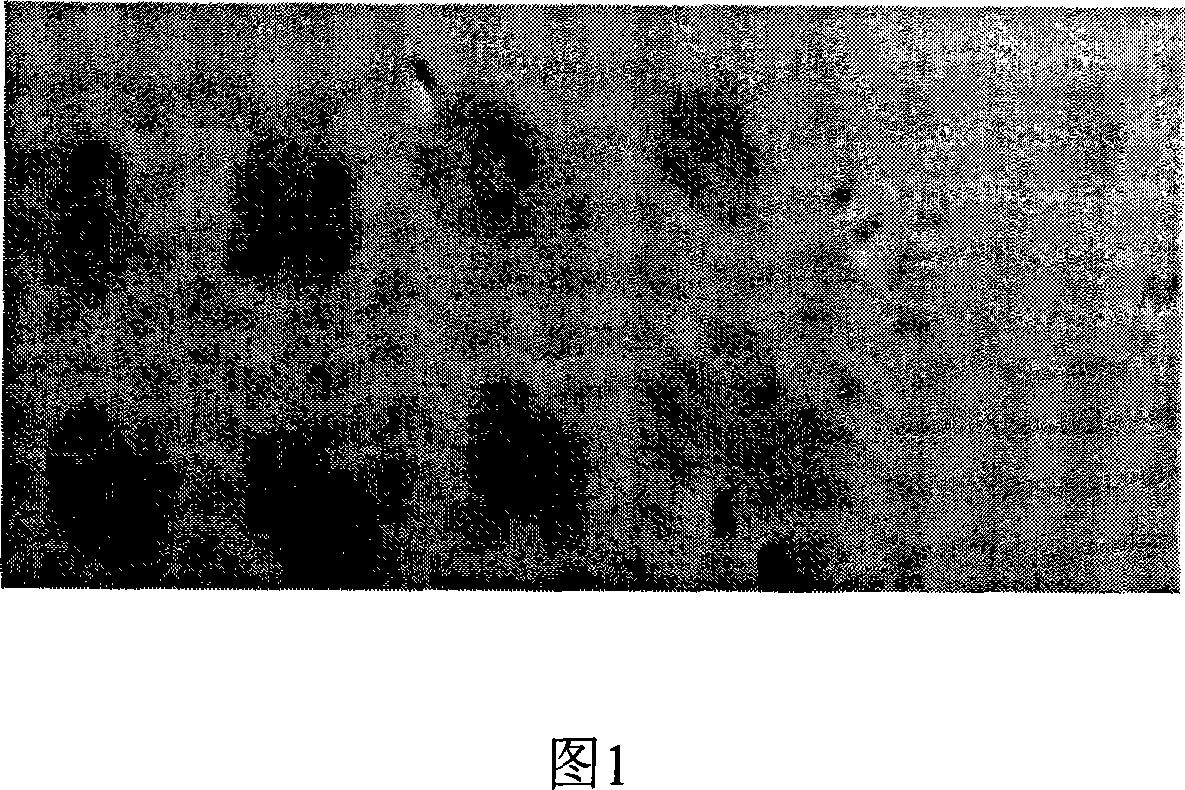Use of phage chip as protein chip or gene chip
A bacteriophage and chip technology, applied in the field of biomedicine, to achieve the effects of particle stability, avoiding direct interference and easy long-term storage
- Summary
- Abstract
- Description
- Claims
- Application Information
AI Technical Summary
Problems solved by technology
Method used
Image
Examples
preparation example Construction
[0016] 2. Preparation of phage chip:
[0017] Using artificial or non-artificial methods and corresponding equipment, the phages displaying specific foreign peptides or antigenic epitopes obtained above are coupled to different chip substrates according to the designed array pattern, such as glass slides, silicon chips, ceramic chips, etc. Phage chips can be obtained by using different microbeads such as sheets, nylon membranes, PVDF membranes, NC membranes, polyacrylamide gels, magnetic beads, and agarose. At the same time, the above-mentioned chip base may or may not undergo different activation treatments such as aldehydes, thiols, aminations, or epoxy groups, so as to facilitate the display of phages on the surface of the glass slide on the chip base in various possible ways.
[0018] 3. Application of phage chip:
[0019] 3.1 The phage chip provided by the present invention can be used as a protein chip displaying foreign peptides or antigenic epitopes for use in antibod...
Embodiment 1
[0036] Embodiment 1: Preparation of phage chip
[0037] 1. Screening and identification of phages displaying foreign peptides or antigenic epitopes
[0038] Method 1: Screening and Identification of Phage Random Peptide Libraries
[0039] (1) Collect and separate serum, antibodies, body fluids or tissue extracts from human or experimental animals by conventional methods.
[0040] (2) "Biopanning" method to screen phage random peptide library: take the amplified and diluted phage peptide library (1.0×10 11 pfu), and 300ng normal rabbit IgG solution into 2ml binding solution, 37°C, shake and incubate at 50rpm, 1h for pre-adsorption, add protein G-labeled magnetic beads 50μl, 37°C, shake and incubate at 50rpm for 20min, magnetic adsorption for 2min, take Supernatant, precipitated with 1 / 6 volume of 2.5M PEG / NaCl, dissolved in 200μl TBS, added to 2ml of human or experimental animal serum, antibody, body fluid or tissue extraction solution containing 300ng antibody, incubated at 37...
Embodiment 2
[0048] Example 2: Application of phage chip in antibody detection
[0049] Method 1: Block the prepared phage chip with 5% skim milk at room temperature for 2 hours, add 1:500 diluted sample to be tested, incubate at room temperature for 2 hours, wash with TBST (TBS containing 0.5% Tween-20), 10min×3, 1: 1000 diluted HRP-labeled goat anti-rabbit IgG was incubated at room temperature for 20 minutes, washed with TBST for 10 minutes×3, and developed with DAB. The specific antibody in the sample can be detected (Figure 1).
[0050] Method 2: The antibody in the sample was separated by a conventional method, and the antibody was labeled by the Cy3 fluorescent labeling method (the Cy3 fluorescent labeling kit was purchased from Pharmacia). Block the phage chip with 5% skimmed milk at room temperature, add Cy3-labeled sample to be detected, incubate at room temperature for 2 hours, wash with TBST (TBS containing 0.5% Tween-20), 10min×3, and interpret the results with a fluorescence ...
PUM
 Login to View More
Login to View More Abstract
Description
Claims
Application Information
 Login to View More
Login to View More - R&D
- Intellectual Property
- Life Sciences
- Materials
- Tech Scout
- Unparalleled Data Quality
- Higher Quality Content
- 60% Fewer Hallucinations
Browse by: Latest US Patents, China's latest patents, Technical Efficacy Thesaurus, Application Domain, Technology Topic, Popular Technical Reports.
© 2025 PatSnap. All rights reserved.Legal|Privacy policy|Modern Slavery Act Transparency Statement|Sitemap|About US| Contact US: help@patsnap.com

